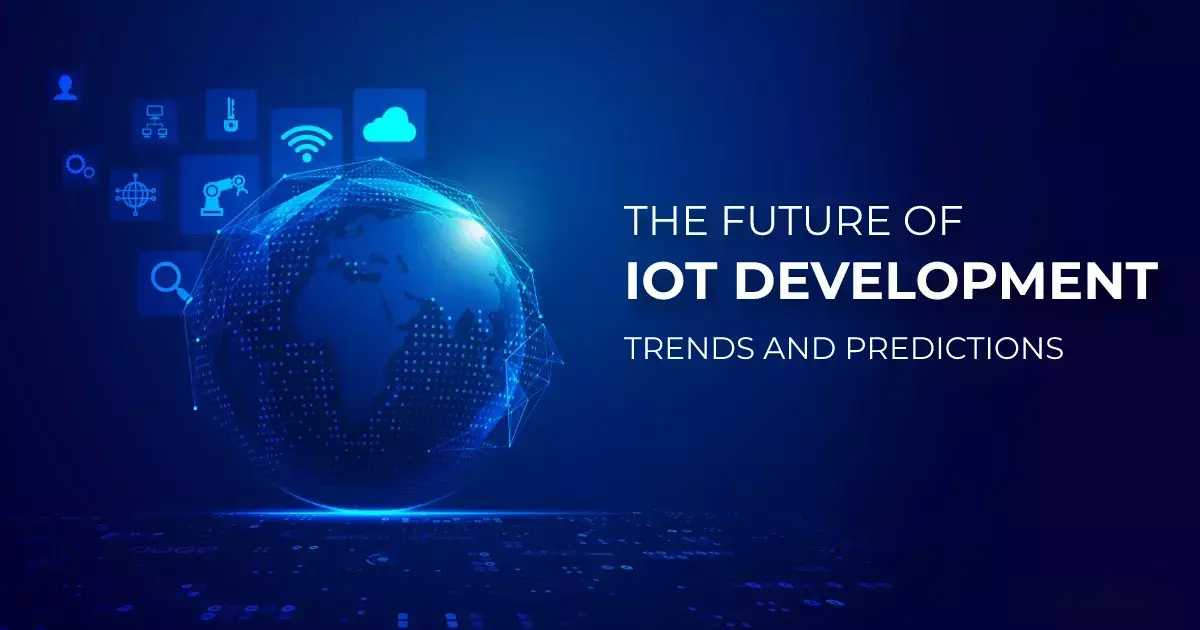
Exploring IoT Development: Key Benefits, Challenges, and Future Trends.
07 March 2025 | Admin
Understanding IoT Development:
The Internet of Things (IoT) is all about interconnecting devices, creating a network where data flows between physical gadgets, software, and digital platforms. IoT development focuses on designing these "smart" systems, allowing everyday devices—from thermostats and cars to industrial machinery—to collect, share, and respond to data. This transformative tech enables real-time monitoring, automation, and greater control over various tasks, adding significant value across industries.
The Benefits of IoT Development:
-
1. Enhanced Operational Efficiency
Automating routine processes with IoT minimizes human intervention, cutting down on time and reducing the risk of errors. Industries like manufacturing and healthcare experience substantial productivity gains by implementing IoT systems to streamline workflows.
-
2. In-Depth Data Insights
IoT devices generate substantial data, providing insights into user behavior and operational efficiency. This data helps businesses make informed decisions, such as optimizing resource use, identifying customer needs, or refining maintenance schedules.
-
3. Improved Convenience and User Experience
IoT has brought us wearables that track fitness, smart home devices that adjust lighting and temperature, and more. These devices enhance our daily lives, tailoring experiences based on personal preferences and needs.
-
4. Remote Monitoring and Control
IoT enables real-time remote monitoring of devices, which is crucial for applications like healthcare, where patient health can be tracked remotely, or in industrial settings, where equipment performance can be monitored from afar.
-
5. Cost Savings Through Predictive Maintenance
IoT systems often come equipped with predictive analytics, flagging potential maintenance issues before they become costly failures. This proactive approach to maintenance leads to reduced operational expenses and maximizes equipment lifespan.
Key Challenges in IoT Development:
-
1. Security and Privacy Risks
The vast data flow in IoT devices poses significant privacy and security challenges. From cyber threats to unauthorized data access, IoT must address these vulnerabilities to protect users.
-
2. Device Compatibility
IoT ecosystems involve a mix of devices from various manufacturers, each with unique protocols. Compatibility issues between devices can cause a fragmented experience, making seamless integration difficult.
-
3. High Development Costs
The resources required for IoT development—covering hardware, software, and ongoing security—can be substantial. These initial costs may pose a barrier for smaller businesses.
-
4. Data Management Complexities
IoT devices generate large volumes of data, which requires efficient storage, processing, and analysis solutions. Managing this data is crucial yet challenging, especially for companies lacking robust infrastructure.
-
5. Reliance on Stable Connectivity
IoT applications depend heavily on reliable internet access. In areas with unstable or limited connectivity, IoT performance may be compromised, limiting its potential.
Future Trends in IoT Development by 2025:
-
1. 5G Connectivity
As 5G networks expand, IoT will benefit from faster, more reliable connections. This boost will open doors to real-time applications such as autonomous vehicles, remote diagnostics, and even immersive virtual reality experiences.
-
2. Advances in Edge Computing
Instead of sending data to remote servers for processing, edge computing allows IoT devices to process data locally. This reduces latency, providing faster responses for time-sensitive applications like medical monitoring or industrial automation.
-
3. Integration of Artificial Intelligence (AI)
AI integration will empower IoT systems to become smarter. From predictive maintenance in factories to highly personalized user experiences at home, AI will make IoT devices more intuitive and effective.
-
4. Enhanced Security Measures
As the number of IoT devices grows, so does the importance of strong cybersecurity. By 2025, we can expect more sophisticated protocols and encryption standards, protecting users and reinforcing trust in IoT systems.
-
5. Growth of Sustainable Smart Cities
IoT is a cornerstone of sustainable urban development. By leveraging IoT data, cities can optimize traffic, conserve energy, and monitor environmental factors, creating more sustainable and livable urban spaces.
Conclusion
IoT is shaping a connected future, with vast implications for personal convenience, industrial efficiency, and urban planning. While challenges such as security, data handling, and compatibility require attention, advances in technology are rapidly addressing these concerns. By 2025, innovations in 5G, edge computing, and AI will make IoT more powerful, secure, and integrated into our everyday lives, redefining how we interact with the world around us.

